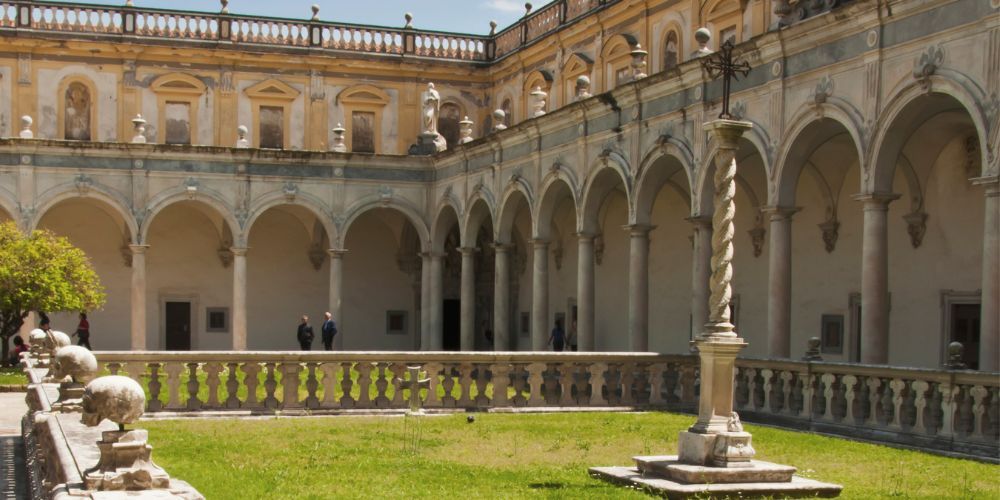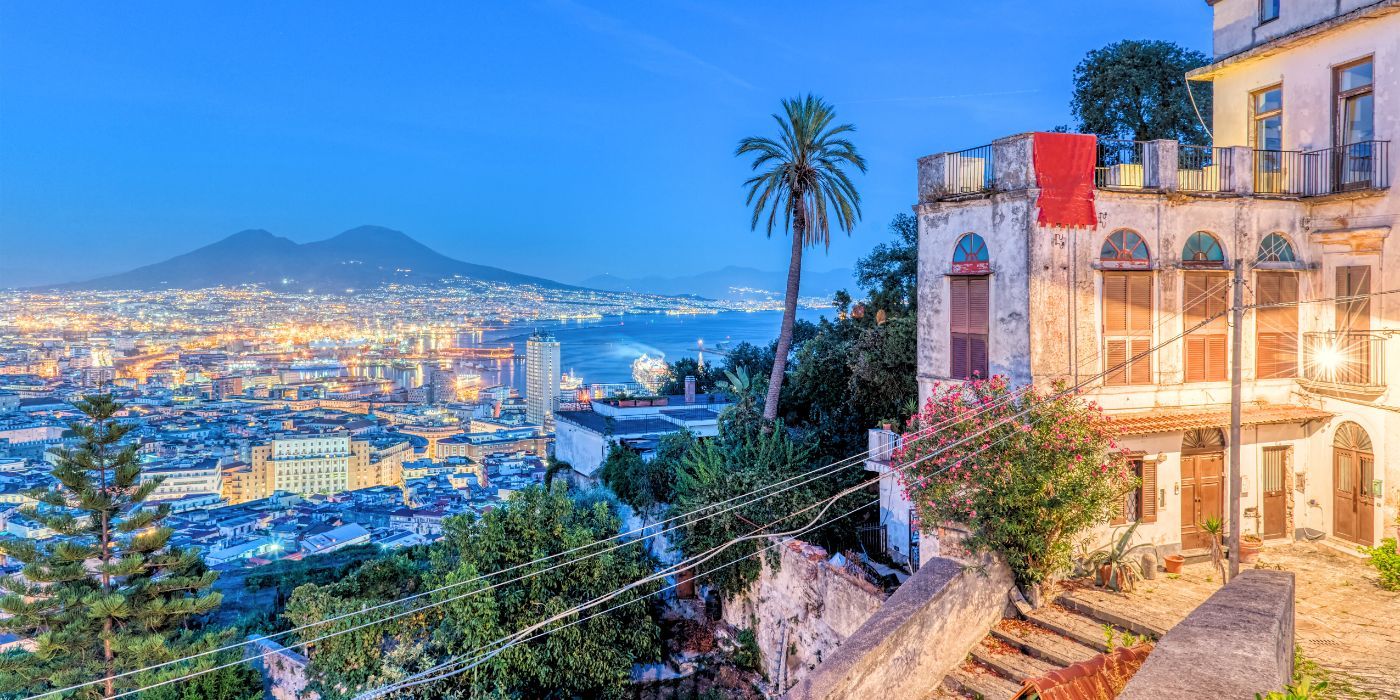For many reasons, Vomero could be considered almost as a separate citadel that watches over Naples. The castle that dominates the top of this hill seems in fact separated from the rest of the city by a large green area.
Its history is also different from that of the more central districts, since the Vomero district is much more recent. In fact, the hill was edified only starting from the late 1800s and the beautiful buildings, together with the pure air, at the time made it one of the noble families' favorite areas.
This atmosphere of elegant detachment has survived at least in part, even if now Vomero is always very crowded, thanks to its numerous attractions, and also thanks to the fact that it's well connected to the other districts of Naples.

Vomero: Naples' shopping and food district

Among many shopping districts in Naples, Vomero is one of the most popular and appreciated. In addition to trendy shops, bookshops, jewelers and so on, here you can also find an impressive number of bars, pizzerias, pubs, ice cream parlors that make this area very appreciated by young people too.
So, let's start our journey to discover Vomero from one of its "doors", Piazza Medaglie d'Oro. From the city's center you can get there very easily with a few metro stops.
A short distance from the square there's the Antignano street market, one of the most famous in town and a favorite destination for shopping at reasonable prices. A few meters further on, begins the large pedestrian area which includes the two main arteries of the district: Via Luca Giordano and Via Alessandro Scarlatti.
Here, in the heart of Vomero, you can enjoy visiting all the shops, and then take a break in one of the many restaurants, including those where you can taste the most authentic Neapolitan cuisine. In via Caldieri, in fact, there is the trattoria Scugnizzi Vomero, where you can find all the traditional dishes, including pizza, prepared to perfection.
Fun fact: Collana Stadium is also located here. It's the stadium where the local team played, before the construction of Maradona Stadium.
From what is said, narrated, or painted, Naples surpasses everything: the shore, the bay, the gulf, Vesuvius, the city, the nearby countryside, the castles, the promenades… I forgive all those who lose their senses at the sight of Naples!
From Vomero, one of Naples' nicest views

Let's continue our tour with a small detour from via Scarlatti, thus reaching via Cimarosa. Here is the beautiful Villa Floridiana, a gift from King Ferdinand IV for the Duchess of Floridia, his morganatic wife.
Today the building houses an important ceramics museum, but the villa is best known for its huge, beautiful garden, open to the public. A walk along its avenues will lead you to the discovery of a small amphitheater, a fountain populated by turtles and above all one of the most beautiful viewpoints in Naples.
In fact, the park of the villa culminates with a long balcony from which you can enjoy a wonderful view from above, over the city and the sea, from Castel dell'Ovo to Posillipo, the other hillside neighborhood, and beyond. A true spectacle.
Up the Vomero hill, the charterhouse and the castle

We can now reach the end of our tour on the top of the Vomero hill, which we will reach by crossing the popular Piazza Vanvitelli. This square is the heart of the neighborhood and comes alive even more in the evening and on weekends. In addition to the metro, close by there are also the three funiculars that connect the area with the center or with Chiaia district.
From here begins the steepest climb which not only leads to two of the most important monuments of Naples, but is also dotted with beautiful Art Nouveau buildings.
The first monument not to be missed is the awesome Castel Sant'Elmo, an imposing medieval building built on the remains of an even more ancient church. Today it's a museum, but it also hosts cultural events.
The second one is the Certosa di San Martino, one of the most successful and important examples of Neapolitan Baroque. The church and the beautiful cloisters, as well as all the ancillary buildings, are of medieval origin, but what we see today is the seventeenth-century version, work of Cosimo Fanzago.
The terrace in front of the charterhouse is another beautiful Vomero's panoramic point. From here starts a long staircase called Pedamentina, an alternative route of great charm which, skirting the hanging gardens of the Certosa, will lead you back to the centre, in the Montesanto area.
Book now Castel Sant'Elmo with Pemcards postcardAbout the author
Written on 07/06/2023




Paola Cirino
Vomero is Naples' shopping ditrict but also much more than that. Let's find out what to see up the hill overlooking the town.